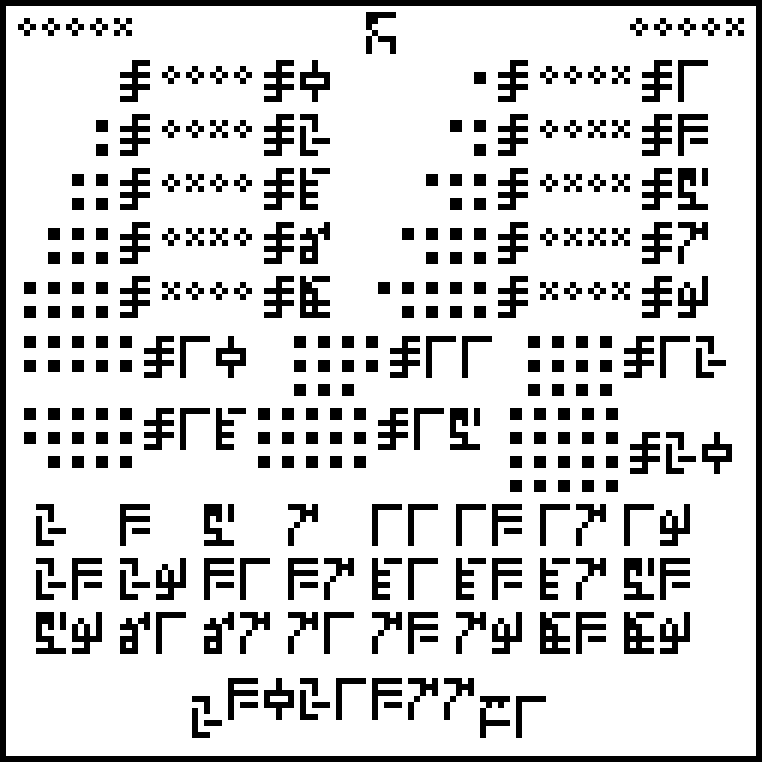The Cosmic Call
Published by marco on
The article Try it and see by Mark Dominus (The Universe of Discourse) discusses the graphic below, which is part of the “Cosmic Call”, a message to extraterrestrials.
The author says that he told his 11-year-old niece,
““I bet you could figure it out if you tried.” She didn’t believe me and she didn’t want to try. It seemed insurmountable.”
I sent this to a few people in my family.
Hint #1
After a little while, I provided some context. The Cosmic Call is:
“In 1999, two Canadian astrophysicists, Stéphane Dumas and Yvan Dutil, composed and sent a message into space. The message was composed of twenty-three pages of bitmapped data, and was sent from the RT-70 radio telescope in Yevpatoria, Ukraine, as part of a set of messages called Cosmic Call.”
This is a message that we sent to a potential recipient that we expect to be intelligent enough to understand the message, but with which we share no culture or language. How would you do that? All you can really say is “I am sentient and capable of understanding that the universe contains structure” and “I understand that there are some absolutes that do not differ no matter what your culture, your creed, your language, or your gender.”
Hint: math.
Hint #2
There were still pleas that it was indecipherable, so I sent some more hints.
The message is to a civilization with which we share nothing. No common language, no common culture, nothing. How would you communicate with someone like that? What could you possibly say to them that they would understand?
The first message you could communicate is “I am capable of communication.” But that’s clear in the fact that a message exists.
The next message would be “I am capable of reasoning. I can extrapolate. I have understood basic things about the universe.”
What might such a basic thing be? What could we say that anyone/thing with intelligence would also have to know?
That’s where math comes in. There are some things that are absolutely unchangeable in the universe. That two is twice as large as one, for example.
How do you teach your interlocutor that you understand this?
Well, you have to start at the very beginning.
You have to explain what “one” is. You have to explain how you count.
What if the other party doesn’t use base ten? We can teach that too.
What should our message be, though?
Is there a sequence we could show? Something that our future friend will recognize and realize that something intelligent made the message?
There are three sections, roughly corresponding to the parts of a magic act: “The Pledge” (The magician shows you something ordinary), “The Turn” (The magician does something interesting with the ordinary), and then “The Prestige” (The magician does something extraordinary).
Pretend you’re learning a language taught by a robot.
